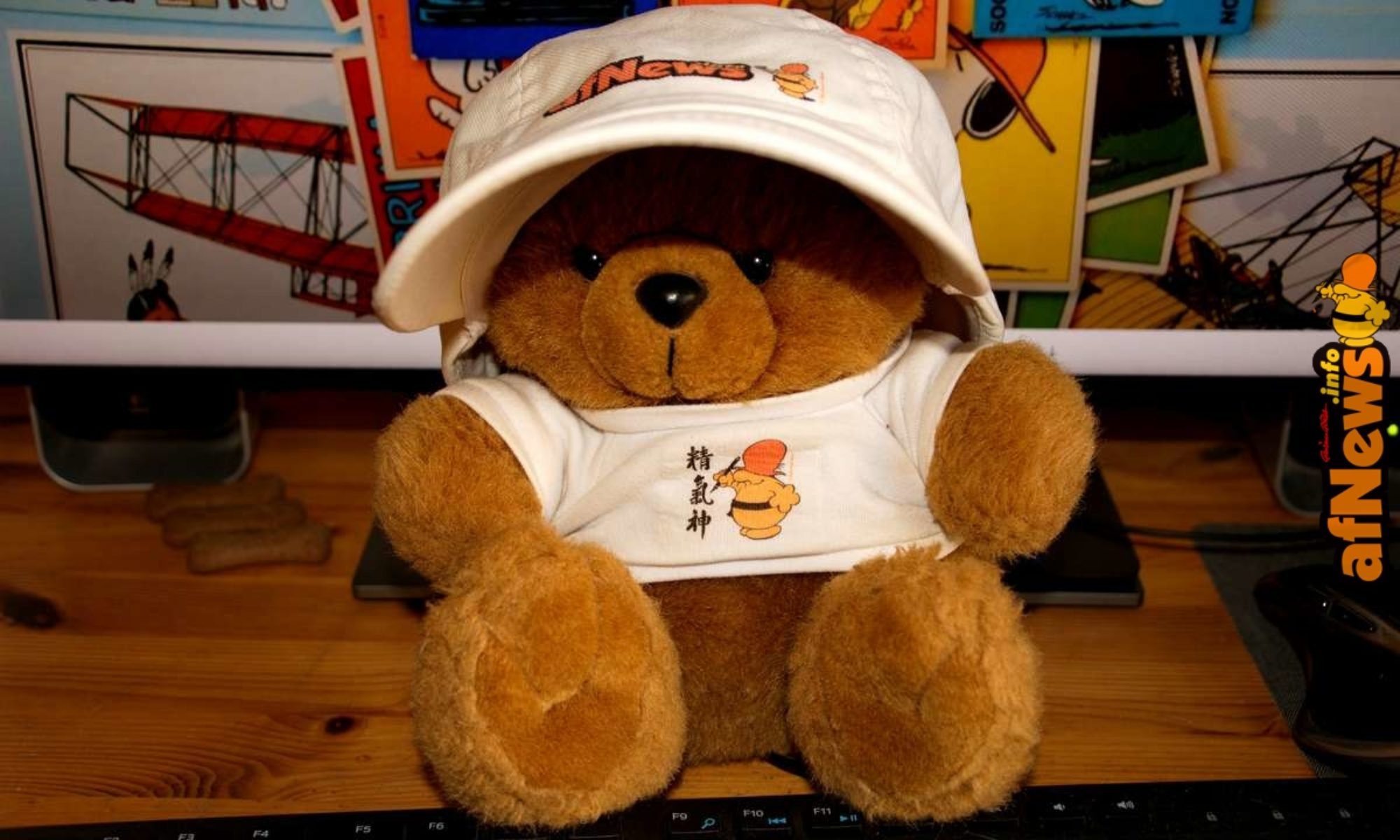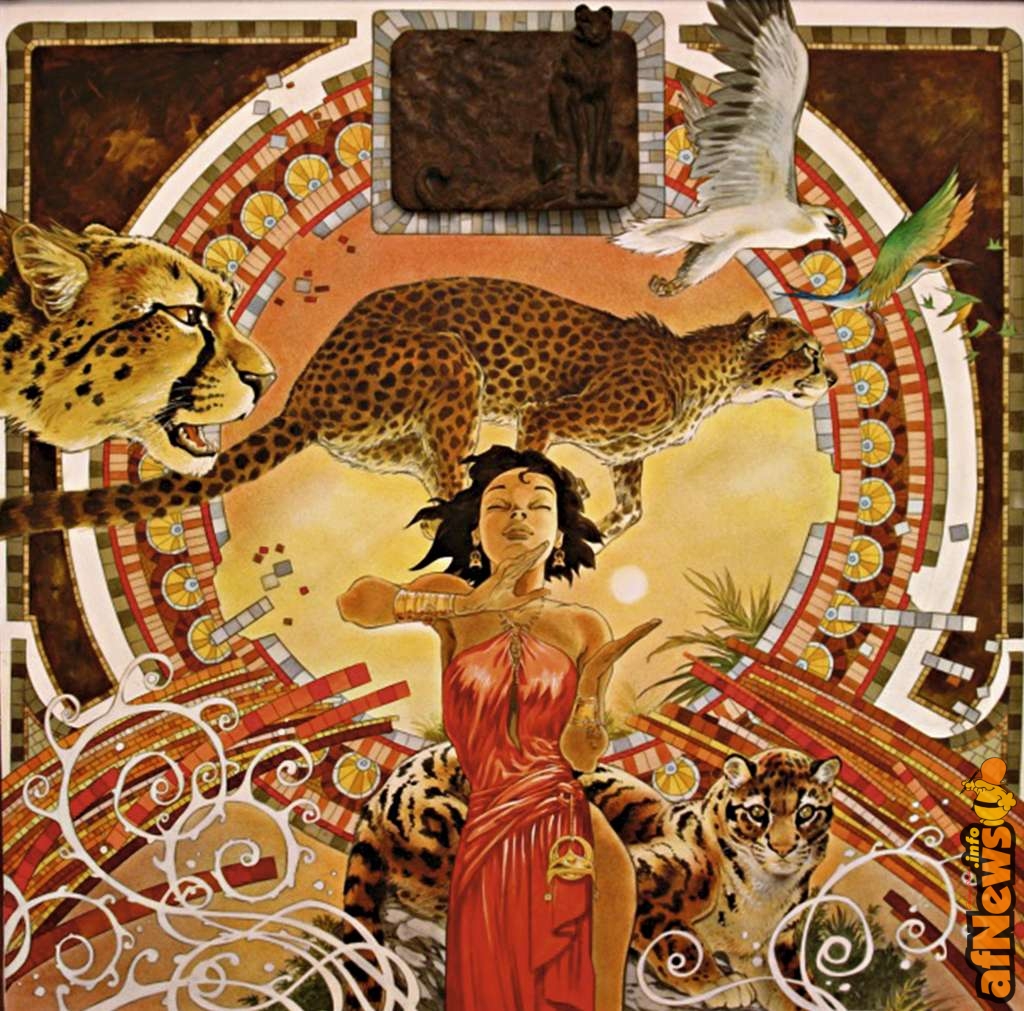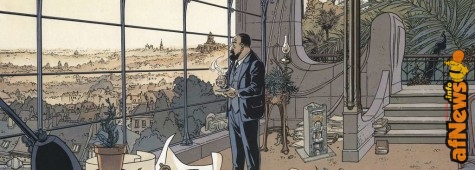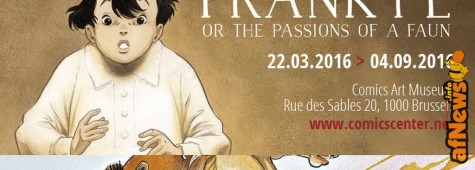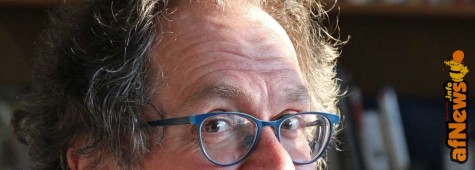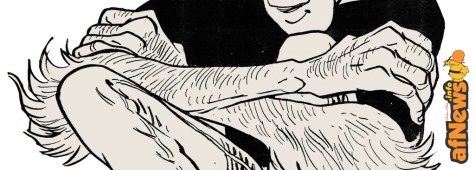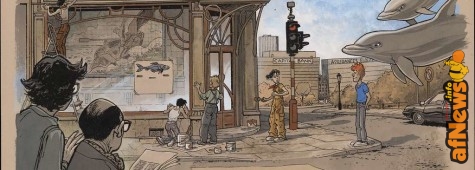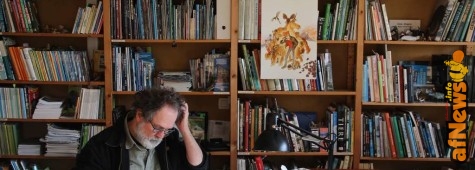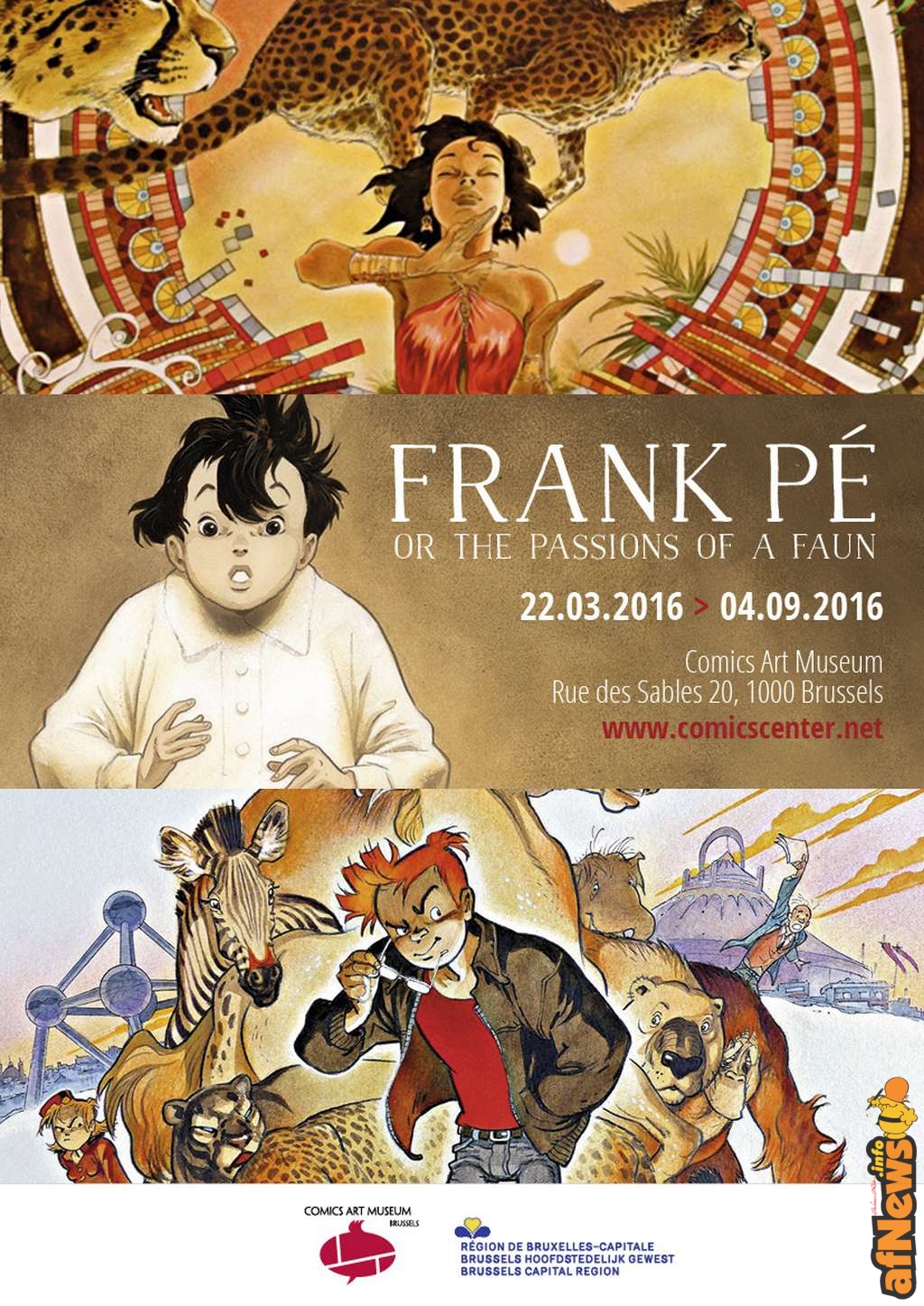Guarda che meraviglia! Capisci perché mi piace tanto Bruxelles? Frank Pé è una delle belle firme del fumetto francofono: qui di seguito trovi la descrizione dettagliata di tutte le sezioni dell’esposizione che presenta oltre 300 originali, oltre a illustrazioni, sculture e dipinti, in mostra al Museo del Fumetto Belga dal 22 marzo fino al 4 settembre 2016.
Photo Daniel Fouss, Belgian Comics Art Museum 2016.
Frank Pé or the Passions of a Faun An exhibition of the Comics Art Museum With the support of the Brussels-Capital Region Curators of the exhibition: Jean Auquier – Jean Serneels Texts : Jean Auquier Scenography : Jean Serneels Management of original artwork : Nathalie Geirnaert and Dimitri Bogaert Legends: JC De La Royère – Mélanie Andrieu Translation : Philotrans Translation Office Corrections : Tine Anthoni and Marie-Aude Piavaux Graphisme : Pierre Saysouk Photogravure : Sadocolor Production : Jean Serneels and the team of the Comics Art Museum Framing : AP Frame, Marie Van Eetvelde Communication : Valérie Constant and Willem De Graeve The Belgian Comic Strip Center would like to thank Frank Pé for his involvement in this project, the collectors who agreed to lend out works , Bernard Mahé, Benoît Fripiat, Christian Antoine, Arié Abisror, and Dupuis and Toth Publishers. , . www.comicscenter.net www.frankpe.com www.surlapointedupinceau.be www.galerie9art.fr
Frank Pé or The Passions of a FaunIn Roman times, a faun was a pastoral deity, and in modern mythology a faun is a treasured go-between between mankind and nature… just like Frank Pé, who loves all the shapes and colours we have around us. Frank is a fervent admirer of Franquin, Follet or Mucha, and also an exceptionally gifted story-writer and illustrator. Signing for a long time only by his first name, he happily combines emotion and illustrations of nature in ‘Broussaille’ and ‘Zoo’. In 2016, his particularly fertile editorial topicality will culminate in the publication of an original comic book on the adventures of Spirou and Fantasio. As a preview, the Belgian Comic Strip Center is exhibiting several of its original plates for you to enjoy. From 1982 onwards, ‘Broussaille’, scripted by Bom, becomes a real comic strip hero. Actually, he is more of a poetic character, a wanderer loving his city, Brussels, similarly to his creator. He acquires an immense readership. In 1991, Frank, working with the script-writer Philippe Bonifay, starts writing the ‘Zoo’ trilogy as part of the prestigious ‘Aire Libre’ collection of the publishing house Éditions Dupuis. ‘Zoo’, which combines both humanism and nature, is a small verdant island where tigers growl while engaged in battle. This is a crucial moment in the creative career of this graphic artist, as he dares to immediately work in colour for the very first time. However, Frank Pé would no doubt not be the artist we know so well, if he did not also have the gift of admiration. This has led to new works inspired by Mucha’s paintings, Follet’s illustrations, ‘Little Nemo’ by Winsor Mc Cay, ‘Spirou’ in the footsteps of Franquin, and even Rodin, a reminder of his early reading on art and sculpture. In tandem with this remarkable work, which will give rise to new developments this year in 2016, Frank Pé does not hesitate to pick up his pens, paper and brushes to help out on projects for associations, out of generosity or just for the excitement factor: co-ordinating a book on cats, personal or collective frescoes, working on cartoon films or various other illustrations, etc. When drawing up a list of Frank Pé’s passions, there is no doubt in our mind. He is this invaluable go- between, who, thanks to his extraordinary artistic talent, shows mankind how lucky they are to be living and breathing in this world awash with colour and life. And his teachings go through emotion. Jean Auquier
With the support of the Brussels-Capital Region Comics Art Museum Rue des Sables, 20 1000 Brussels (Belgium) Tel: +32 22 19 19 80 www.comicscenter.net visit@comicscenter.net Open every day from 10 a.m. till 6 p.m.
Exhibiton texts (©Jean Auquier, Belgian Comics Art Museum 2016) 0.1. From a Very Tender Age… In the country that has given birth to the weekly comic magazines ‘Tintin’ and ‘Spirou’, comic strip art is a childhood illness that never leaves you. Young Frank Pé was born in Ixelles (Brussels) on 15th July 1956, and he is of this ilk of artists, who never seems to have wondered what they would do later on in life. At school he was already drawing caricatures of the teachers, which he then sold in the playground at breaktime. Later, he made his first appearance in the weekly comic ‘Spirou’, with two ‘Cartes Blanches’, in 1973 and 74. As they developed, the comic magazines became real studios for the 9th Art, which enabled many young talented artists to express themselves, to come to people’s attention, and to rub shoulders with the leading lights of the profession. 0.2. First Steps He is gifted, that is for sure. However, that in itself is not enough. So, this (very) young published author takes a course at the Plastic Arts Division at the ‘Institut Saint-Luc’. The comic magazine Spirou does not lose sight of him, however. From 1976-1982, Frank takes charge of a new column, Nature Jeunesse (Nature for Youth), in which he creates the character of Broussaille in 1978. Taking more and more place in the magazine, he invents the weekly strip of the moose ‘L’Elan’, stopgap of depressive and life-saving humour. ‘L’Elan’ is later published in the form of a comic book. What was its name? ‘L’Elan Will Never Have a Comic Book’. In that same year but in a completely different style, he publishes ‘Comme un animal en cage’ (Like a Caged Animal), with Vincent Murat as its main character (scripted by Térence, alias Thierry Martens). This could be compared to a test bench for translating the word ‘exotic’ into comic strip form. 1.0. Roaming Around in the Luxembourg Neighbourhood Frank lives in the Luxembourg district of Brussels, some 100 m from the station that goes by the same name. This is near the Natural Science Museum and Leopold Park, which is where monumental greenhouses and a zoo were built in the 19th century. In the 1980s, the Belgian capital was transforming itself into the capital of Europe, and in order to create space for this, those things that were still standing were being razed to the ground. Roaming around in his neighbourhood, Broussaille will make his mark on people’s mindsets in a few comic books. Poets and their imagery are better at doing justice than the men of the law. 1.1.1. Les Baleines publiques Broussaille (scripted by Bom) is fascinated with nature and animals, and knows his neighbourhood like the back of his hand. At the Natural Science Museum, which is famous for its herd of iguanodons, the skeleton of a whale towers above the reception desk. What if these marine animals decided to step out from their display cases? What if they showed us the city in a different light? With his ‘Les Baleines publiques’ (Public Whales), Frank is sending us the following message: despite the frenzied urban development that is taking place in his neighbourhood, which is comparable to being charged by a herd of blue elephants, blue like the colour of the European flag, it only takes a grouper fish or a flight of whales to experience everyday life in the city like an adventure. 1.1.2. Les sculpteurs de lumière Broussaille is not a hero. He is a real person, with his own values but also with his own hesitancy and his own inner conflicts. A waste disposal factory is built next to Dampréval, which is a village in the Ardennes where his uncle lives – who is depicted by Frank as René Hausman, another poet of the art of illustration and bard of the forest. That in itself would be enough to construct a cutting script and plenty of inner conflicts. However, Frank and Bom don’t leave it at that. It is a quest of light, the culmination of something that has been kept secret for centuries, which forms the core of this work, and contributes greatly to readers’ lives due to the questions that it raises. 1.1.3. La Nuit du Chat Back in the district of Luxembourg. Broussaille has to go out looking for his cat. He spends a whole night among the railway tracks and the Avenue de la Couronne. However, whilst he is out looking for his pet, Broussaille finds in the past and in the strangeness of fleeting encounters new reasons to continue building his future. When the dream becomes reality, nothing is quite the same again and the teenager has matured like a fruit in the sun. ‘La nuit du chat’ (The Night of the Cat) is to Frank and Bom what ‘Tintin in Tibet’ is to Hergé: A major work set in a luminous and simple story. 1.1.4. Sous deux soleils Invited to Burundi and then to Japan by a Belgian diplomat posted there, these first long-distance travels offer Frank the opportunity to make numerous discoveries, from the gorillas in the land of volcanoes to the sumo wrestlers and their rituals. Exposed to the Japanese sun, Broussaille goes in search of his girlfriend Catherine, who is swept away by an indifferent crowd on a platform in the underground in Osaka. Roaming and exploring, he gains nearly as much wisdom as the ancient stonework. In the burning heat of Burundi, the young man feasts his eyes on strong and varied images, both of sadness and intense joy. Travels tell of a humanity that is both fragile and strong like a reed. 1.1.5. Un faune sur l’épaule In a world in which progress has as much of a suffocating effect as the ozone layer, Broussaille feels the need to put down onto paper the moments of plenitude that he experiences deep within him, and this to ensure that the noise of destruction does not entirely drown out the sound of his heartbeat. With this fifth comic book, and being in full charge of the story, Frank moves away from the traditional way of constructing a comic strip. The reader lets himself be carried away by the faun, this wonderful being, and privileged go-between between the gods, nature and mankind. ’Un faune sur l’épaule’ (A Faun on the Shoulders) is a philosophical story in which trees, fields and steep paths combine to create a symphony. 1.2.0. First Painted Wall in Brussels On 29th June 1991, the City of Brussels inaugurated the first gable wall to be painted in what would in that decade, and several paintings later, become the comics strip route of Brussels. The purpose of all of this is to embellish the districts and blank walls, and to give people a different way of visiting the city. The Belgian Comic Strip Center suggested Frank’s name for the first wall, and this is situated at Plattesteen, near the Grand-Place. Some fifty gable walls later, Broussaille is still the most photographed. Between dream and reality, he says that a city should be discovered on foot. 1.3.0. Calenders and Natural Parks For more than fifty years, the Belgian Catholic Scouting Federation has been commissioning comic strip authors to illustrate the front cover of their annual calendar. From Hergé to Peyo, all the former greats have taken part in this. This is where Frank discovers a new role: Chief Editor, which selects and guides his co-workers. Frank created and illustrated this calendar from 1985 until 2000, and we particularly remember the 1991 calendar, ‘Une nature d’enfer’ (Fantastic Nature). This was produced with the assistance of the Nature and Ornithological Parks of Belgium (now referred to as Natagora), and each month of the year reveals a nature park with an important animal living there. 1.4.0. Entre Chats and a mass of illustrations The year 1989 signals a major turnaround in Frank’s life as an artist. Guy Delcourt, a young Parisian editor, commissions him to produce an illustration book on cats. Frank does not feel that he can take on all of the responsibility for the project, so this turns into a group project that he co-ordinated: ‘Entre Chats’ (Between Cats). For the author of Broussaille, who has now turned conductor of the orchestra, it is an exceptional opportunity to be the first one to read new works by Franquin, Follet and even Hausman. This is an incredible privilege for Frank who holds them in such high esteem. Over the years, Frank creates numerous media artworks for natural parks in the north of France, for the theatre of Calais, for various cultural events and comic strip festivals, etc. He is renowned for his keen sense of scale and for being a great producer. Numerous orders come to him because of the ease with which he is able to work in different dimensions and scales. 2.0. A Life’s Work The story dictates the technique. For Broussaille and his semi-humoristic features, the final copy of the drawing was produced in Indian ink, and then coloured in. However, this time, Frank Pé switches to using direct colour, which makes the drawings bolder. How many pages? This decision is made jointly with Philippe Bonifay, his script- writer, and with the publisher (Dupuis), who is launching a new collection ‘Aire Libre’… And that requires strong and original works. 2.1. Zoo, 3 Volumes At the start of WWI, a bizarre property near Elbeuf in Normandy, is home to a zoo and its occupants. This is where fate and circumstance bring together four characters; Célestin, the owner, a humanist medical doctor, Manon, his adoptive daughter, Buggy, an animal sculptor from Belgium and Anna, a young Siberian woman who is trying to recover emotionally after getting her nose bitten off by someone in the village. Anna’s terrifying past, the future that is likely to be just as bad, as well as the links being forged between them, results in Zoo becoming a masterpiece. Its immense richness will never quite be revealed. 2.2. Zoo: Dream of a Workshop According to Frank Pé: “One of the pleasures of working on light is going just that bit too far. Overexposing or loss in shading can reveal the fantastic that is concealed within each image.” The universe of Zoo is of such riches that very soon Frank Pé is dreaming of dedicating a book of illustrations to it, separate from the story. Not that he feels weighed down by the story. However, according to him, the story only allows one to see the tip of the iceberg of the work performed to create it. Actually, contrary to usual ways of working on a comic strip, the authors themselves did not seek to draw out the network of roads of this haven, thus being sure to discover other points of view, and an infinite number of other types of light. 2.3. The Bronze Bestiary When he draws, the author imagines his characters in three dimensions. He tells and illustrates a story. However, when he plunges his hands into clay in order to give it shape and volume, he is fashioning an object. Frank Pé is a self-taught sculptor and has been sculpting since the age of 20. With ‘Les Sculpteurs de lumière’ (Broussaille, vol. 2), and later with Buggy, the sculptor of Zoo, we knew that Frank Pé had a great love for this primary art. Similarly, he has never concealed his admiration for Rodin, who managed to put mystery into his works according to Frank. “- And mystery is the first gateway I used to get closer to the spiritual.” 3.0. From One Art to Another Thirty-five years after he first started work at the comic magazine ‘Spirou’, Frank Pé is one of those rare authors to have succeeded in this challenge that is so specific to modern-day comic strip art. Whilst his readership is enjoying his comic books in the libraries, the contemporary art world is making eyes at him… In the top galleries, his illustrated works are admired by the most prestigious collectors. This part of Frank Pé’s œuvre follows perfectly in the footsteps of ‘Zoo’, all the more so because the author asserts an artistic identity that is reminiscent of the masters of Art Nouveau. 3.1. Dialogue with Mucha In response to an initiative from an association of passionate art lovers, ‘L’Art s’invite’ (Art Invites Itself In), Frank Pé was invited to create work based upon the oeuvre of Mucha (Ivancice, 1860-Prague, 1939), who was a famous painter, decorative artist and poster designer. Although often copied, this artist is not easy to master. Frank made an extensive study of his decorative work before he accepted to rise to this challenge. Working within the tiny world of Zoo, Frank Pé imagined that Célestin, the owner of the said Zoo, one day asked his friend Mucha for a series of posters… It is distressing to think that these relics from times gone by have only just been found again. 3.2. Cartoons Frédéric Du Chau, the (Belgian) producer of the ’Excalibur, The Magic Sword’ (1998) project or ‘The Quest of Camelot’ depending on the country, contacted Frank and asked him to carry out graphic research for the project, in-between script and animation. This was exciting work but the final outcome was disappointing in that none of the sequences on which he had worked were included in the final montage. This was no doubt due to a question of target group and marketing. However, this work in the shadows for Warner Bros brought in other more regular and rewarding works, including ‘The Little Polar Bear 2 – The Mysterious Island’ (2005), ‘Dodo’ (Cartoon Film, 2007) and more recently ‘Robinson Crusoe’ (NWave, 2016). 4.0. The Art of Homage For Frank Pé, paying homage is only justified if it goes hand in hand with admiration and emotion. Whenever he is confronted with the oeuvre of a master, whether this be Franquin, Mc Cay or Mucha, first and foremost, it presents a unique opportunity to find out the big secret of this oeuvre, and what makes it so unique. As soon as this research is completed – even if it is never quite completed – all that remains to be done is for the artist to be accepted by the oeuvre of the master, and to incorporate his own truth into his work. This is how one marries up recognition and the recognisable. 4.1. Portraits of Heroes When visiting the ‘Uffizi Gallery’ in Florence, Frank Pé discovers the art of portraiture, and is fascinated with how the faces on the canvases are brought to life; so many lives that are several centuries old. The art of portraiture, he later says, is a desperate attempt to capture onto the canvas the entire soul of a living human being. Then one day, he discovers a magnificent charcoal portrait of the Count of Champignac by Franquin. The comic strip character had been given credible real-life features… It is in this spirit that Frank Pé will endeavour to create a series, which has become famous in its own right. 4.2. In Little Nemo Land In 1906, the adventures of Little Nemo in Slumberland put the name of a genius, Winsor Mc Cay, into the spotlight. Every Sunday, this performer, comic strip artist, poster designer and inventor relates the nocturnal dreams of a little boy. Frank Pé is captivated by the hint of circus life, the animals and the decors based on Art Nouveau arabesques. He initially receives an order from the Galerie 9e Art (Paris). It ended up involving four volumes for a limited audience, whilst waiting impatiently for a ‘normal’ edition, which will materialise in a few months. 4.3. Frank Pé’s Spirou I n the autumn of 2016, the publishing house Éditions Dupuis will be editing a new volume dedicated to the adventures of Spirou and Fantasio by… Frank Pé and Zidrou. Born to entertain the comic magazine which goes by the same name (1938), Spirou has spent time in the hands of numerous gifted artists who have walked in the footsteps of Rob-Vel. Jijé introduced Fantasio and then handed him over to Franquin for a first apotheosis with Champignac, le Marsupilami and so many other wonderful stories, etc. In 2006, the editor chose to offer other authors working in different genres to also rub shoulders with these two mythical heroes. The extracts on display in the Museum are therefore entirely unpublished works… 4.4. A Taste for Frescoes and the Public The secret profession of comic strip authors, who work in isolation in their workshops, away from the madding crowd, is the total opposite of working with the public. However, there is a rare class of artists who are capable of working on vertical surfaces of up to 20 metres long. By drawing these frescoes, Frank offers the public this magic which is constantly being renewed by the touch of the hand of the person drawing it. And the art of the masters consists in producing in this way, within a matter of two days, an improvised work, which would not have come into being without this extraordinary dimension. 5.0. The Zoo, Teacher of Values According to Frank Pé: “I do not perceive nature to be a reflection of my ego or of my emotional needs.” Ever since he discovered zoos, Frank has been dreaming of building one of his own. In the past, zoos provided an opportunity to come into contact with a few lovely examples of exotic life forms. That has all changed now. How does one install art in the heart of a structure built to ensure animal well-being, and to do one’s scientific work for animal protection, and to welcome visitors to a project, which must at all times be creative and harmonious and communicate values? That is the crux of the issue that Frank has been studying and testing for a long time. His artistic contributions to the Pairi Daiza Park (background drawings of Indonesia and elephants), the Natural Park of the Han Caves as well as the Zoos of Antwerp, Amiens, Montpellier, etc. are all bearing the first fruits of this whilst awaiting the implementation of his personal projects. COMICS ART MUSEUM An accomplished attraction located in the heart of Brussels, the Comics Art Museum has been honouring the creators and heroes of the 9th Art for more than 25 years. The regularly renewed permanent exhibitions and a diversified programme of temporary exhibitions enable visitors to discover the countless aspects of comics art. Tintin and the Smurfs lead the way towards further adventures, an encounter with a world where creativity has no limits. Enhanced by an exceptional Art Nouveau home designed by Victor Horta, the Comics Art Museum is just as much a tribute to the pioneers as a glimpse of contemporary comics art. (Photo © Daniel Fouss/ Belgian Comics Art Museum) Comics Art Museum Rue des Sables, 20 1000 Brussels (Belgium) Tel: +32 22 19 19 80 www.comicscenter.net visit@comicscenter.net Open every day from 10 a.m. till 6 p.m.
